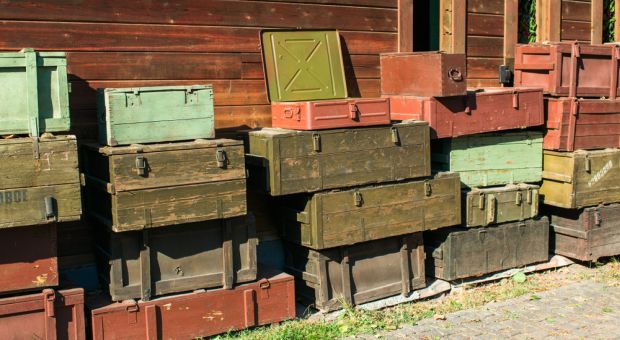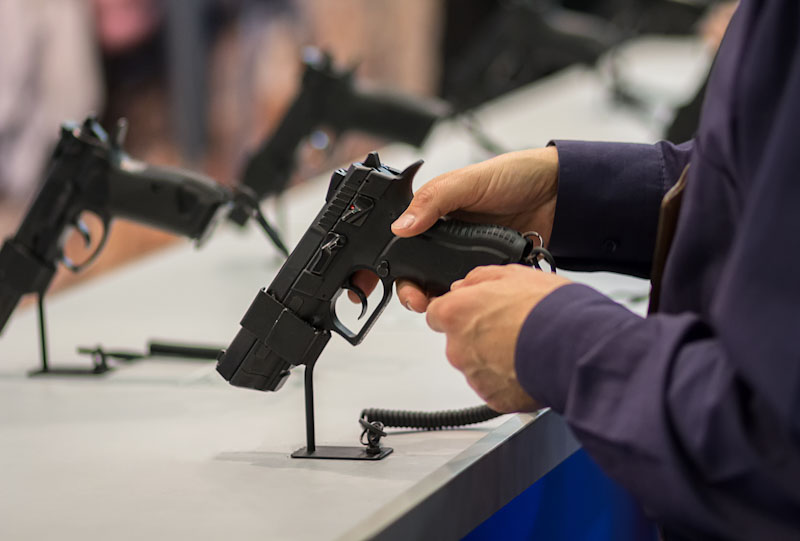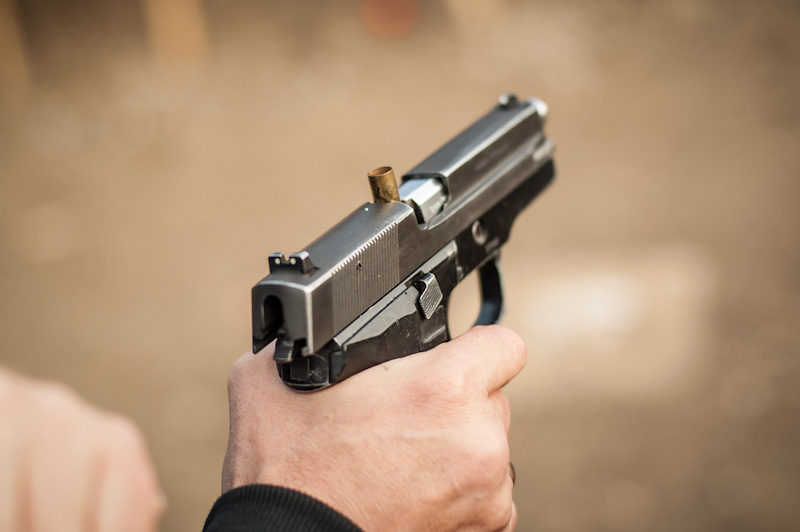If you own a firearm, the odds are you have some ammunition stored in a safe place when not in use.
The thing about firearm advocates and outdoorsmen is the fact that a very small collection of guns and ammo will inevitably lead to acquiring more firearms and more ammo as time goes on.
To remedy this, enthusiasts often buy larger safes and build a workbench to store and perform upkeep on their weapons, but this leaves one question for the beginner to the intermediate collector, how do you properly store ammunition for long periods of time without compromising the integrity of the ammunition key components?
To answer this, let’s take a look at several of the most simple yet overlooked ammunition storage tips for the long term.
Why You Should Have a Surplus of Ammunition
In the not so distant past, ammunition and firearms, depending on where you live, could be found in abundance with ease at your local gun shop and shooting ranges. Now, with the harsh realities of the world coming to a peak with shootings becoming more frequent, firearm ownership has become much more of a controversial subject than it once was.
Come today, when politicians have undoubtedly made gun control a primary issue in state and presidential elections, has made many firearms owners to panic buy and stockpile as many firearms and as much ammunition as humanly possible, leading to a massive scarcity in both guns and ammunition for the eight years under the previous administration in the United States.
For those who were left unprepared for the ammunition scarcity, where scores of ammunition seemingly vanished overnight, found themselves scrounging for assorted ammunition types, mixed matched brands, and paying much more for specific ammunition types than they were months before.
Events like these just go to show that you can’t rely on going to the store to stock up on ammo the next time you want to go put rounds in the paper because nothing is guaranteed given the current political landscape.
What’s the alternative? Making an investment and amassing your own significant stockpiles of ammunition, leaving you with the responsibility to ensure you’re storing it in the optimized conditions that won’t jeopardize the safety of both your firearms and god forbid yourself.“Buy Cheap and Stack It Deep”
Think of your ammunition as an investment opportunity. It’s a lot like playing the stock market in the way that you want to invest as much as you can when the current prices are low, so come the time when the market price rises, you already have a healthy portfolio, in this case, a healthy amount of ammo put back, giving you the freedom to enjoy your hobbies, attend training defense, and so on.
The kicker is thermodynamics.
Over time, entropy will set in and your ammo will start to degrade. The powder will lose its potency, primers will become dimpled and will fail to fire, and worst-case scenario, the casing becomes compromised and the shooter runs the risk of a catastrophic weapons failure and significant bodily harm as a result.
To remedy this, it’s a fairly straightforward process but it comes with a little homework before you start to assemble your arsenal of assorted ammunition.
Ammunition Storage Options
Before you go out and buy a bunch of military surplus ammo cans, take a step back. When choosing containers, make sure they have a rubber O-ring gasket around the lid, as this will do wonders in keeping the ammo in a stable condition.
Next, make sure the container is durable. One box of 9mm isn’t too heavy, but ten or so boxes is a little different, make sure you buy a container that is strong enough to bear the weight and is large enough to store the specific type of ammo you wish.
Another storage option would be to invest in a gun safe to store your ammo. Some gun owners like to have two safes, one safe for their firearms and another safe for their ammunition, or alternatively having just one big safe to store everything.
You may consider investing in some desiccant, or the little silica packets you find in a new pair of shoes or something, they such the moisture out of the air and keeps it dry.
What You Need To Do
Optimizing ammunition storage is much more than just buying a container and tossing your bullets inside and calling it a day. Nope, much more to it than that.
First, you have to get a little scientific and collect some readings. Moisture is the bane of functioning ammunition existence. Moist conditions lead to corrosion by seeming into the small nooks and crannies of the cartridge, eating away at the primer and essentially rendering the accelerants inert. The same goes for excessively high temperatures.
Think about the time you found an old round in the back of your safe or in the bottom of an old range bag, what did it look like compared to a fresh round? You may not notice right away but the probability is high you’ll see some greenish or rust discoloration on the round, as well as bubbles and dimples on the cartridge and the primer itself, this is not good, like at all. If you find any ammo like that, safely discard it immediately.
You want the area you store your ammunition to maintain an ambient temperature of around 70 degrees Fahrenheit and a localized relative humidity of no more than 50%. The same can be said about excessive temperatures as well, which is just as detrimental to integrity as moisture.
To make this process a little easier, there are a wide variety of dedicated temperature and humidity sensors you can install in your gun vault or ammunition storage area that will give you accurate and consistent readings to ensure the conditions are optimal for your intents and purposes.
If you can’t find an area in your home with the ideal conditions, you can invest in items such as safe dehumidifiers, dehumidifying rods, temperature control units, etc. It entirely depends on what conditions you’re working with, what’s economically feasible, and how crazy you want to get with it.
Conclusion
Thank you for taking the time to educate yourself on proper ammunition storage. As you can see, it’s not a subject to take likely due to the fact it’s both extremely expensive, and flat out dangerous when done incorrectly.
These are just the basics so make sure you think outside the box and do what works best with what you’re given to keep your ammo ready to store over the long term.










Bill in Idaho | December 20, 2018
|
Hello, Sam. Welcome Aboard ! You covered the subject well. Just Remember: Sunlight, Moisture, and Heat – Those are your enemies. I Suggest choosing a R/H Well Below 50% – Here in Idaho, 10% is Doable, and 20% is a snap. Thanks for your Information.
John A. Kraft | December 20, 2018
|
define R/H
Jason | December 22, 2018
|
Relative humidity, I’d guess.
Richard | December 21, 2018
|
R/H = relative humidity
Bill in Idaho | December 23, 2018
|
Thank You, Richard. I did not figure I needed to spell that out.
Ted Gordon | December 25, 2018
|
Way to go Sam! This is just so great post that I just need to follow a couple simple storage principles and take meaningful action. Big thanks!
David DeFevers | October 1, 2019
|
Another consideration: never store ammunition near gun oil or cleaning solvents.
Phantom30 | December 15, 2020
|
Best template for logistical storage is to follow military techniques which have been perfected over time. Ammo cans have a rubber seal etc,, but you can add a little bag of desiccant to ensure preservation from humidity present when the lid was closed. Go to a site like clean ammo cans to see all the parts necessary to secure your ammo, from crates to stripper clips. Now, if you are interested in storage ammo YOU ARE TOO LATE. Most everything is sold out, out of stock, off the shelf. You can’t find primers anywhere except Canada but they will not ship to u. Whenever something comes in stock on line it is gone nearly the same day. In last six months ammo prices for many things have more than doubled. If you have something that needs storage then look in to it. otherwise, stock up on reloading if you can.
By the way the old 46th edition of Lyman’s reloading handbook has recipes for reloading with cast bullets. Can’t find this info very often anymore.
Dave greeme | December 15, 2020
|
For years, I collected wheel weight lead from tire shops. Recently I came into several hundred pounds of linotype (printing) lead. these two leads make excellent cast bullets.. look for these and make your own. dgreene
bryan mackay | December 15, 2020
|
Why not buy reloading equiment and then focus on storing components?
Bill In Idaho | December 15, 2020
|
A Good Thought, Bryan – With some caveats: Reloading is a tedious and precise process with NO ROOM for Error ! Learning to Reload requires time and due diligence. Anyone can learn how – with patience, enough time, the correct tools (All of them). An experienced, knowledgeable coach is invaluable. I do not wish to discourage Anyone – just plan and learn carefully. That will pay you dividends. 30+ years of learning for me.
GREG CHAMBERLAIN | December 15, 2020
|
my Dad bought 30-36 ammo in 1962 (surplus from the gov’t )and it still shoots fine after at least 60, maybe 80 years later! take care of it and it’ll last.